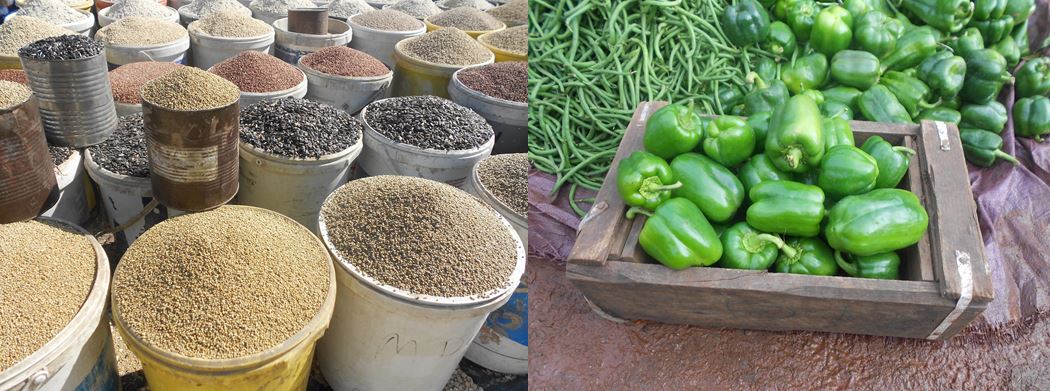A keen interest by African farmers to know the price of commodities on the market is understandable. However, tracking activities in informal agricultural markets by eMKambo over the past few years has proved that price is not a major determinant of profit-making in agribusiness. Profit-making is a result of creatively managing production costs, quality, losses and aggregating commodities. The market is always available, usually with set prices. It is about how a farmer’s commodity becomes competitive per given price. As an ecosystem, the market is a collection of many factors including ideas and experiences.
Converting resources into dollars and cents
Profitability is about converting water, soil and labour into commodities that give you dollars and cents. Farmers should figure out best ways of converting their knowledge into products. Indigenous knowledge has to be embedded in competitive commodities not just price on the market. Price is just an expectation guide. A good price may mean nothing if a farmer has already incurred losses. Approaching agriculture from the market’s big picture provides a growth pattern that can enable farmers to make choices within available resources. Informed by the big picture, farmers can choose to diversify into high value crops.
The market also shows who else is producing what a farmer is trying to produce and the number of players involved. Such intelligence will avoid the band wagon effect where farmers get into the same commodity irrespective of competitive advantage. Unless farmers track their commodities, it is difficult to intelligently plan and project outcomes on the market. Trends surrounding a farmer’s particular commodities can provide an idea on how the farmer can adjust costs and quality in line with his/her resources. The market provides a general map and guidance that empowers a farmer to make intelligent choices.
The power of understanding competition dynamics
Where the market segments commodities into 1st price, 2nd price and 3rd price, farmers have to fit their commodities in those price parameters. While lack of organized production in the whole agricultural sector can be beyond an individual farmer’s influence, commercially-minded farmers should make an effort to understand supply levels and competition dynamics in the market. It is also important for farmers to know other competitive forces outside their commodities. For any given commodity volume, price might fall or increase not due to gluts or shortages but due to new entrants and exits in the market that either stretch or release the market budget. For instance, if U$500 000 is circulating for given volumes of commodities in the market and one commodity, accounting for 5% cash in circulation, moves out of the market, it means the same budget begins to cover fewer commodities. On the other hand, if for the same amount of cash in circulation, a new commodity enters the market, the budget in circulation is stretched in ways that translate to less demand for other commodities.
Buying power is determined by the influx and withdrawal of various commodities. Unlike the situation with mono crops like tobacco which do not have substitutes and whose price is determined by demand and supply only, in informal markets more than 70 commodities can substitute each other. For instance, following a good rainfall season, besides maize, other commodities like sweet potatoes and groundnuts start competing with maize. An increase in sweet potatoes means people will eat less porridge which is a derivative of maize. Sweet potatoes, pumpkins and cow peas all compete with maize.
Matching standards with market expectations
Farmers can also reduce losses through market-oriented production calendars that inform them when to produce. Understanding market standards and expectations also reduces losses. It is usually through a mismatch between market standards and expectations that farmers lose out. Another key issue is grading. If farmers do not understand commodity grades and how to aggregate their commodities, they end up depending on the market’s umbrella decisions about quality and other critical factors. When well-informed, farmers can be able to grade appropriately and push medium to high quality commodities to the market while low quality commodities can be re-purposed for livestock and other uses.
Consistency in production and supply is also a very important factor. It is not possible for a commodity to perform well throughout the season. Farmers should specialize on at least three commodities in order to spread their risk. That way there are 60% chances of getting better prices. A strong relationship with the market can also be cultivated as farmers become famous for being consistent suppliers. Traders do not often want to waste time and resources looking for new suppliers. Commodities destined for the market face competition, based on factors like price, buyers, standards and specifications. When producing for the market, farmers should make sure the best resources are devoted in order to satisfy customers’ value for money. It is unlike when farmers are producing for satisfying their own household tastes. Consumers have competing forces on their budgets. Why should a consumer buy your sweet potatoes instead of bread?
Charles@knowledgetransafrica.com / charles@emkambo.co.zw / info@knowledgetransafrica.com
Website: www.emkambo.co.zw / www.knowledgetransafrica.com
eMkambo Call Centre: 0771 859000-5/ 0716 331140-5 / 0739 866 343-6
